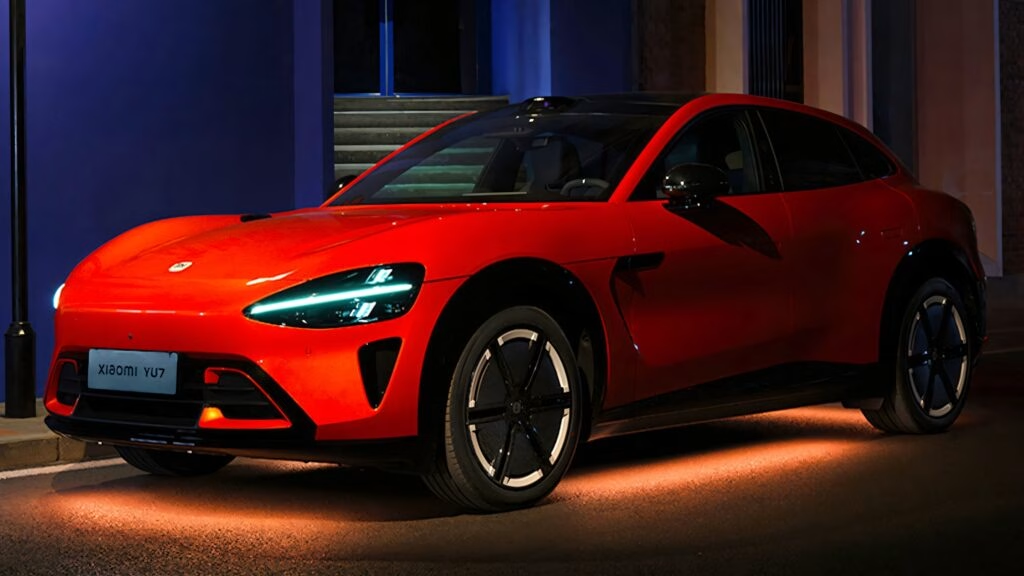Why Are People Paying Over Sticker Price for the Xiaomi YU7?
If you’ve been eyeing the Xiaomi YU7 SUV, you’re not alone—and you’re definitely not the only one feeling the sting of a long waitlist. The buzz around this all-electric SUV has reached fever pitch, with demand so high that some buyers are shelling out thousands above the manufacturer’s suggested retail price just to get their hands on one sooner. But what’s really driving this frenzy, and is it worth jumping into the resale market?
What’s Fueling the Xiaomi YU7 Craze?
Let’s get right to it: Xiaomi’s YU7 isn’t some ultra-rare, limited-edition performance car. It’s designed as a mass-market EV, but the numbers tell a different story. When Xiaomi opened up orders, a staggering 289,000 reservations poured in within the first hour. That’s not a typo. The result? Delivery times for the entry-level YU7 Standard have stretched to as much as 60 weeks—over a year of waiting. Even the higher trims, like the Pro and Max, come with waits of nearly a year.
This isn’t just about hype. Xiaomi has built a reputation in China for delivering high-value, tech-packed products, and their foray into electric vehicles has clearly struck a chord. The YU7’s blend of style, performance, and competitive pricing has made it a must-have, especially among younger, tech-savvy buyers who see it as a status symbol and a smart investment.
How Much Are Used YU7s Selling For?
With new cars so hard to come by, a secondary market has sprung up almost overnight. Early owners and some dealers are flipping near-new YU7s for a tidy profit. As of this writing, about 80 YU7s are listed for resale in China, with asking prices ranging from 350,000 to 390,000 yuan (roughly $48,300 to $53,800). For context, the official starting price for a new YU7 is 279,900 yuan ($38,600), topping out at 329,900 yuan ($45,600) for the Max trim.
That means some buyers are paying up to $8,000 or more above MSRP just to skip the queue. It’s a classic case of supply and demand, but it’s also a testament to the perceived value and desirability of the YU7. And let’s be honest—if you’re facing a 60-week wait, the premium starts to look a little less outrageous.
Why Are Wait Times So Long?
This isn’t Xiaomi’s first rodeo when it comes to high demand, but the scale here is something else. The company simply can’t build YU7s fast enough to keep up. The Standard model has the longest wait, at 57-60 weeks, while the Pro and Max trims are only slightly better, with waits of 49-52 weeks and 41-44 weeks, respectively.
Production bottlenecks are common in the EV world, especially when a new model takes off faster than anticipated. Battery supply, chip shortages, and the sheer logistics of ramping up assembly lines all play a role. Xiaomi’s challenge now is to scale up without sacrificing quality—a balancing act that even established automakers struggle with.
Will the YU7 Hold Its Value?
Here’s where things get interesting. In most cases, paying over sticker price for a new car is a losing bet—values tend to drop the moment you drive off the lot. But the YU7 might be an exception, at least in the short term. Data from the Chinese market shows that the Xiaomi SU7 sedan, a close sibling to the YU7, retains an impressive 88.91% of its value after the first year. That’s the highest among all Chinese cars, according to recent industry reports.
If the YU7 follows a similar trajectory, early buyers might not see the steep depreciation that plagues most new vehicles. Of course, once production catches up and the backlog clears, prices on the used market will likely soften. But for now, the combination of brand loyalty, limited supply, and strong resale data is keeping values high.
Is Flipping the YU7 a Smart Move?
It’s tempting to see the YU7 as a quick way to make a buck. Some early buyers are clearly cashing in, but there’s always risk. The used market is fickle, and if Xiaomi manages to ramp up production faster than expected, those sky-high premiums could evaporate overnight. Plus, there’s the ethical question—should automakers or regulators step in to curb flipping and protect regular buyers? It’s a hot topic in China right now, with some calling for stricter rules to prevent speculative reselling.
For buyers, the advice is simple: weigh the cost of skipping the line against the risk of overpaying. If you’re not in a rush, patience could save you thousands. But if you absolutely need the latest tech on your driveway, be prepared to pay for the privilege.
What Can We Learn from the Xiaomi YU7 Phenomenon?
The YU7’s runaway success is a wake-up call for the auto industry. It shows just how quickly consumer demand can outpace supply, especially when a brand nails the right mix of price, features, and reputation. It also highlights the growing importance of resale value in the EV market—a factor that’s often overlooked but can make a big difference in total ownership cost.
The big takeaway? Navigating the Xiaomi YU7 market isn’t about perfection—it’s about smarter adjustments. Start with one change this week, whether it’s setting a realistic budget or deciding how long you’re willing to wait, and you’ll likely spot the difference by month’s end.

